
Developing critical thinking skills in computer-aided extended reading classes
One of the skills that can be taught in an English proficiency class that adopts literary texts for teaching the language is critical thinking. The background, characters and their motives are among those that invite critical inquiry and interpretation. Although it has been claimed that discussing l...
Full description
| Main Authors: | , |
|---|---|
| Format: | Article |
| Language: | English |
| Published: | 2004 |
| Subjects: | |
| Online Access: | |
- Description
Similar Items
| id | iium-10306 |
|---|---|
| recordtype | eprints |
| spelling | iium-103062013-06-25T11:44:57Z http://irep.iium.edu.my/10306/ Developing critical thinking skills in computer-aided extended reading classes Mat Daud, Nuraihan Husin, Zamnah L Education (General) PE English One of the skills that can be taught in an English proficiency class that adopts literary texts for teaching the language is critical thinking. The background, characters and their motives are among those that invite critical inquiry and interpretation. Although it has been claimed that discussing literary texts in the traditional way can help develop students' critical thinking skills, it is yet to be proved whether the use of a teaching aid can help the process. This study is, therefore, carried out to see if the use of computer software can help to develop such skills. It specifically looks at the potential of a literary text, Othello, and a concordancer in developing and enhancing critical thinking abilities of 40 English as a Second Language (ESL) students at the International Islamic University Malaysia. An experimental study was carried out, where an experimental group was exposed to text analysis using a concordancer whilst the control group analysed the text manually. The Cornell Critical Thinking Test was used to analyse the critical thinking ability of the students. The experimental group outperformed the control group in all the subscales measured, but the percentage of variance in the scores was low. Blackwell Publishing Ltd. 2004 Article PeerReviewed application/pdf en http://irep.iium.edu.my/10306/1/nuraihan.pdf Mat Daud, Nuraihan and Husin, Zamnah (2004) Developing critical thinking skills in computer-aided extended reading classes. British Journal of Educational Technology, 35 (4). pp. 477-488. ISSN 0007-1013 http://onlinelibrary.wiley.com/doi/10.1111/j.0007-1013.2004.00405.x/abstract 10.1111/j.0007-1013.2004.00405.x |
| repository_type | Digital Repository |
| institution_category | Local University |
| institution | International Islamic University Malaysia |
| building | IIUM Repository |
| collection | Online Access |
| language | English |
| topic | L Education (General) PE English |
| spellingShingle | L Education (General) PE English Mat Daud, Nuraihan Husin, Zamnah Developing critical thinking skills in computer-aided extended reading classes |
| description | One of the skills that can be taught in an English proficiency class that adopts literary texts for teaching the language is critical thinking. The background, characters and their motives are among those that invite critical inquiry and interpretation. Although it has been claimed that discussing literary texts in the traditional way can help develop students' critical thinking skills, it is yet to be proved whether the use of a teaching aid can help the process. This study is, therefore, carried out to see if the use of computer software can help to develop such skills. It specifically looks at the potential of a literary text, Othello, and a concordancer in developing and enhancing critical thinking abilities of 40 English as a Second Language (ESL) students at the International Islamic University Malaysia. An experimental study was carried out, where an experimental group was exposed to text analysis using a concordancer whilst the control group analysed the text manually. The Cornell Critical Thinking Test was used to analyse the critical thinking ability of the students. The experimental group outperformed the control group in all the subscales measured, but the percentage of variance in the scores was low. |
| format | Article |
| author | Mat Daud, Nuraihan Husin, Zamnah |
| author_facet | Mat Daud, Nuraihan Husin, Zamnah |
| author_sort | Mat Daud, Nuraihan |
| title | Developing critical thinking skills in computer-aided extended reading classes |
| title_short | Developing critical thinking skills in computer-aided extended reading classes |
| title_full | Developing critical thinking skills in computer-aided extended reading classes |
| title_fullStr | Developing critical thinking skills in computer-aided extended reading classes |
| title_full_unstemmed | Developing critical thinking skills in computer-aided extended reading classes |
| title_sort | developing critical thinking skills in computer-aided extended reading classes |
| publisher | Blackwell Publishing Ltd. |
| publishDate | 2004 |
| url | http://irep.iium.edu.my/10306/ http://irep.iium.edu.my/10306/ http://irep.iium.edu.my/10306/ http://irep.iium.edu.my/10306/1/nuraihan.pdf |
| first_indexed | 2023-09-18T20:19:45Z |
| last_indexed | 2023-09-18T20:19:45Z |
| _version_ | 1777408027625783296 |
- SMS-Aided teaching of reading in Malaysia: factors to consider by: Mat Daud, Nuraihan, et al. Published: (2012)
- Peer evaluation and the development of critical thinking skills in academic writing class for undergraduate students by: Mat Daud, Nuraihan Published: (2010)
- The effects of internet-assisted language learning (Iall) on the development of esl students' critical thinking skills by: Mohamad, Faizah, et al. Published: (2013)
- Mobile learning: a quasi-experiment on using SMS to support reading comprehension programme by: Mat Daud, Nuraihan, et al. Published: (2013)
- Relationship between young learners’ learning styles and development of writing skills using PowerPoint as a teaching aid by: Mat Daud, Nuraihan Published: (2011)
Critical Thinking Skills in the EAP Classroom
Negotiating Tensions in the Sri Lankan Context
Cite this chapter

- Maya Gunawardena 7 &
- Eleni Petraki 8
Part of the book series: Critical New Literacies ((CNLI))
1471 Accesses
The role of critical thinking has been at the heart of a controversial debate in English for Academic Purposes (EAP) circles, dividing Western and non-Western, particularly Asian, education. Some researchers consider critical thinking as the preserve and ideal of Western education (Durkin, 2008; Egege & Kutieleh, 2004; Walker & Finney, 1999) and a significant gap in Asian students’ learning.
This is a preview of subscription content, log in via an institution to check access.
Access this chapter
Subscribe and save.
- Get 10 units per month
- Download Article/Chapter or eBook
- 1 Unit = 1 Article or 1 Chapter
- Cancel anytime
- Available as PDF
- Read on any device
- Instant download
- Own it forever
Tax calculation will be finalised at checkout
Purchases are for personal use only
Institutional subscriptions
Unable to display preview. Download preview PDF.
Similar content being viewed by others

Developing Thinking Skills in English Literacy Instruction in Taiwanese Secondary Schools: Teachers’ Perspectives

Higher-Order Critical Thinking in Teacher Preparation

Teaching Critical Thinking: An Operational Framework
Atkinson, David. (1987). The mother tongue in the classroom: A neglected resource? ELT Journal , 41 (4), 241-247.
Article Google Scholar
Atkinson, Dwight. (1997). A critical approach to critical thinking in TESOL. TESOL Quarterly , 31 (1), 71-94.
Ballard, B., & Clanchy, J. (1997). Study abroad: A manual for Asian students (Revised ed.). Kuala Lumpur, Malaysia: Longman.
Google Scholar
Behar-Horenstein, L. S., & Niu, L. (2011). Teaching critical thinking skills in higher education: A review of the literature. Journal of College Teaching and Learning , 8 (2), 25-42.
Canagarajah, A. S. (2006). Toward a writing pedagogy of shuttling between languages: Learning from multilingual writers. College English , 68 (6), 589-604.
Celce-Murcia, M., & Olshtain, E. (2000). Discourse and context in language teaching . Oxford, UK: Oxford University Press.
Creese, A., & Blackledge, A. (2010). Translanguaging in the bilingual classroom: A pedagogy for learning and teaching? The Modern Language Journal , 94 (1), 103-115.
Daud, N. M., & Husin, Z. (2004). Developing critical thinking skills in computer-aided extended reading classes. British Journal of Educational Technology , 35 (4), 477-487.
Durkin, K. (2008). The middle way: East Asian master’s students’ perceptions of critical argumentation in UK universities. Journal of Studies in International Education , 12 (1), 38-55.
Durkin, K. (2010). The adaptation of East Asian master’s students to western norms of critical thinking and argumentation in the UK. Intercultural Education , 19 (1), 15-27.
Egege, S., & Kutieleh, S. (2004). Critical thinking: Teaching foreign notions to foreign students. International Education Journal , 4 (4), 75-85.
Ennis, R. H. (1989). Critical thinking and subject specificity: Clarification and needed research. Educational Researcher , 18 (3), 4-10.
Fosnot, C. T. (1989). Enquiring teachers, enquiring learners: A constructivist approach for teaching . New York: Teachers College Press.
Gaiser, T. J., & Schreiner, A. E. (2009). A guide to conducting online research . London: Sage Publications.
Gaskaree, B. L., Mashhady, H., & Dousti, M. (2010). Using critical thinking activities as tools to integrate language skills. Sino-US English Teaching , 7 (4), 33-45.
Halpern, D. J. (1997). Critical thinking across the curriculum . Mahwah, NJ: Lawrence Erlbaum Associates.
Hornberger, N. H. (2002). Multilingual language policies and the continua of biliteracy: An ecological approach. Language Policy , 1 (1), 27-51.
Jordan, A., Carlile, O., & Stack, A. (2008). Approaches to learning: A guide for educators . Glasgow, UK: Bell and Bain.
Kabilan, M. K. (2000). Creative and critical thinking in language classrooms. The Internet TESL Journal , VI (6). http://iteslj.org/Techniques/Kabilan-CriticalThinking.html
Kamali, Z., & Fahim, M. (2011). The relationship between critical thinking ability of Iranian EFL learners and their resilience level facing unfamiliar vocabulary items in reading. Journal of Language Teaching and Research , 2 (1), 104-111.
Kiely, R. (2004). Learning to critique in EAP. Journal of English for Academic Purposes , 3 (3), 211-227.
Kramsch, C. (1993). Context and culture . Oxford: Oxford University Press.
Kumaravadivelu, B. (2003). Problematizing cultural stereotypes in TESOL. TESOL Quarterly , 37 (4), 709-719.
Liyanage, I. (2010). Globalisation: Medium-of-instruction policy, indigenous educational systems and ELT in Sri Lanka. In V. Vaish (Ed.), Globalization of language and culture in Asia (pp. 209-232). London: Continuum.
Liyanage, I. (2012). Critical pedagogy in ESL/EFL teaching in South-east Asia: Practices and challenges with examples from Sri Lanka. In K. Sung & R. Pederson (Eds.), Critical ELT practices in Asia: Key issues, practices, and possibilities (pp. 137-152). Rotterdam, the Netherlands: Sense Publishers.
Masduqi, H. (2011). Critical thinking skills and meaning in English language teaching. TEFLIN Journal , 22 (2), 185-200.
Mayring, P. (2000). Qualitative content analysis. Forum: Qualitative Social Research , 1 (2). http://nbnresolving.de/urn:nbn:de:0114-fqs0002204
Ministry of Higher Education. (2012). Sri Lanka qualifications framework . Colombo, Sri Lanka: Retrieved from http://www.ugc.ac.lk/en/all-notices/1156-sri-lanka-qualifications-framework.html .
Moore, T. J. (2011). Critical thinking and disciplinary thinking: A continuing debate. Higher Education Research & Development , 30 (3), 261-274.
Niewoehner, R. J. (2006). Applying a critical thinking model for engineering education. World Transactions on Engineering and Technology Education , 5 (2), 341-344.
Paton, M. (2011). Asian students, critical thinking and English as an academic lingua franca. Analytic Teaching and Philosophical Praxis , 32 (1), 27-39.
Paul, R., & Elder, L. (2000). Critical thinking: Nine strategies for everyday life, Part I. Journal of Developmental Education , 24 (1), 40-41.
Pennycook, A. (2001). Critical applied linguistics: A critical introduction . Mahwah, NJ: Lawrence Erlbaum.
Raheem, R. (2009). Establishing benchmarks in academic English: The Sri Lankan experience . Paper presented at the 7th Asia TEFL Conference, Bangkok, Thailand.
Richards, J. C. (2001). Curriculum development in language teaching . Cambridge, UK: Cambridge University Press.
Book Google Scholar
Shirkhani, S., & Fahim, M. (2011). Enhancing critical thinking in foreign language learners . Paper presented at the 1st International Conference on Foreign Language Teaching and Applied Linguistics, Sarajevo, Bosnia and Herzegovina, 5-7 May.
Tama, M. C. (1989). Critical thinking has a place in every classroom. Journal of Reading , 33 (1), 64-65.
Thompson, C. (1999). Critical thinking: What is it and how do we teach it in English for Academic Purposes (EAP) programs? Paper presented at the HERDSA Annual International Conference, Melbourne, Australia, 12-15 July.
Walker, P., & Finney, N. (1999). Skill development and critical thinking in higher education. Teaching in Higher Education , 4 (4), 531-547.
Wilson, K. (2009). Reading in the margins: EAP reading pedagogies and their critical, postcritical potential . Unpublished doctoral dissertation, University of Sydney.
Download references
Author information
Authors and affiliations.
Learning and Teaching Group, University of New South Wales, Canberra, Australia
Maya Gunawardena
Discipline of Humanities, Faculty of Arts and Design, University of Canberra, Australia
Eleni Petraki
You can also search for this author in PubMed Google Scholar
Editor information
Editors and affiliations.
Griffith University, Australia
Indika Liyanage
Tony Walker
Rights and permissions
Reprints and permissions
Copyright information
© 2014 Sense Publishers
About this chapter
Gunawardena, M., Petraki, E. (2014). Critical Thinking Skills in the EAP Classroom. In: Liyanage, I., Walker, T. (eds) English for Academic Purposes (EAP) in Asia. Critical New Literacies. SensePublishers, Rotterdam. https://doi.org/10.1007/978-94-6209-752-0_5
Download citation
DOI : https://doi.org/10.1007/978-94-6209-752-0_5
Publisher Name : SensePublishers, Rotterdam
Online ISBN : 978-94-6209-752-0
eBook Packages : Humanities, Social Sciences and Law Education (R0)
Share this chapter
Anyone you share the following link with will be able to read this content:
Sorry, a shareable link is not currently available for this article.
Provided by the Springer Nature SharedIt content-sharing initiative
- Publish with us
Policies and ethics
- Find a journal
- Track your research
- DOI: 10.1515/jccall-2023-0029
- Corpus ID: 269778728

Promoting critical reading instruction in higher education: a three-step training scheme facilitated by using corpus technology
- Jing Yang , Fang Mei
- Published in Journal of China Computer… 14 May 2024
- Education, Computer Science, Linguistics
Figures and Tables from this paper

One Citation
Online technologies for language learning and teaching: innovations, practices and perceptions from students and teachers, 68 references, the development of corpus-based language pedagogy for tesol teachers: a two-step training approach facilitated by online collaboration, teacher paths for developing corpus-based language pedagogy: a case study.
- Highly Influential
Using Corpus-Aided Data-Driven Learning to Improve Chinese EFL Learners’ Analytical Reading Ability
Developing critical thinking skills in computer-aided extended reading classes, critical reading, critical thinking: delicate scaffolding in english for academic purposes (eap), developing critical literacy in science through an sfl-informed pedagogical heuristic, multimedia enhanced educational products as a tool to promote critical thinking in adult students, can data driven learning address l2 writers' habitual errors with english linking adverbials, technology-based reading intervention programs for elementary grades: an analytical review, enhancing extensive reading with data-driven learning, related papers.
Showing 1 through 3 of 0 Related Papers
- For Readers
- For Authors
- For Librarians

CERTIFICATE


Hamzah Puadi Ilyas English Education Department, Graduate School, University of Muhammadiyah Prof. DR. HAMKA (UHAMKA) Jakarta Indonesia
- Other Journals
- Announcements
- Author Guidelines
The Quest for Critical Thinking Framework in ELT
Al-Fadhli, S., & Khalfan, A. (2009). Developing critical thinking in e-learning environment: Kuwait university as a case study. Assessment and Evaluation in Higher Education, 34(5), 529-536.
Atkinson, D. (1997). A critical approach to critical thinking in TESOL. TESOL Quarterly, 31(1), 71-94.
Aubrey, C., Ghent, K., & Kanira, E. (2012). Enhancing thinking skills in early childhood. International Journal of Early Years Education, 20(4), 332-348.
Baildon, M. C., & Sim, J. B. (2009). Notions of criticality: Singaporean teachers' perspectives of critical thinking in social studies. Cambridge Journal of Education, 39(4), 407-422.
Beaumont, J. (2010). A sequence of critical thinking tasks. TESOL Journal, 1(4), 427-448.
Benesch, S. (1999). Thinking critically, thinking dialogically. TESOL Quarterly, 33(3), 573–580.
Braund, M., Scholtz, Z., Sadeck, M., & Koopman, R. (2013). First steps in teaching argumentation: A South African study. International Journal of Educational Development, 33(2), 175-184.
Dantas-Whitney, M. (2002). Critical reflection in the second language classroom through audiotaped journals. System, 30(4), 543-555.
Daud, M. N., & Husin, Z. (2004). Developing critical thinking skills in computer-aided extended reading classes. British Journal of Educational Technology, 35(4), 477-487.
Davidson, B. W. (1998). Comments on Dwight Atkinson's “A Critical Approach to Critical Thinking in TESOL”: A case for critical thinking in the English language classroom. TESOL Quarterly, 32(1), 119–123.
Davidson, B. W., & Dunham, R. A. (1997). Assessing EFL student progress in critical thinking with the ennis-weir critical thinking essay test. JALT Journal, 19(1), 43-57.
Fisher, R. (2008). Teaching thinking: Philosophical enquiry in the classroom (3rd ed.). London: Continuum.
Freeman, D. (2014). Reading comprehension questions: The distribution of different types in global EFL textbooks. In N. Hardwood (Ed.), English language teaching textbooks: Content, consumption, production (pp. 72-110). London: Palgrave Macmillan.
Gieve, S. (1998). A Reader Reacts. TESOL Quarterly, 32(1), 123–129.
Glevey, K. E. (2006). Thinking & education. Leicester: Matador.
Green, L. (2009). Education for democracy: Using the classroom community of inquiry to develop habits of reflective judgement in South African schools. Thinking Skills and Creativity, 4(3), 178-184.
Halvorsen, A. (2009). Incorporating critical thinking skills development into ESL/EFL courses. Retrieved September 1, 2012, from https://learnweb.harvard.edu/ccdt/_uploads/documents/Halvorsen%20-%20Incorporating%20C...pdf
Hawkins, M. R. (1998). Apprenticing nonnative speakers to new discourse communities. TESOL Quarterly, 32(1), 129–132.
Jenkins, P., & Lyle, S. (2010). Enacting dialogue: The impact of promoting philosophy for children on the literate thinking of identified poor readers, aged 10. Language and Education, 24(6), 459-472.
Korkmaz, O., & Karakus, U. (2009). The impact of blended learning model on student attitudes towards geography course and their critical thinking dispositions and levels. Turkish Online Journal of Educational Technology - TOJET, 8(4), 51-63.
Kubota, R. (1999). Japanese culture constructed by discourses: Implications for applied linguistics research and ELT. TESOL Quarterly, 33(1), 9–35.
Lam, C. (2012). Continuing Lipman's and Sharp's pioneering work on philosophy for children: Using Harry to foster critical thinking in Hong Kong students. Educational Research and Evaluation, 18(2), 187-203.
Liaw, M. L. (2007). Content-based reading and writing for critical thinking skills in an EFL context. English Teaching and Learning, 3(2), 45-87.
Lubben, F., Sadeck, M., Scholtz, Z., & Braund, M. (2010). Gauging students' untutored ability in argumentation about experimental data: A South African case study. International Journal of Science Education, 32(16), 2143-2166.
McGregor, D. (2007). Developing thinking; developing learning: A guide to thinking skills in education. Berkshire, England: Open University Press.
Mills-Bayne, M. (2009). A lesson in underestimating young children. Critical and Creative Thinking, 17(1), 35-41.
Moseley, D., Baumfield, V., Elliot, J., Gregson, M., Higgins, S., Miller, J., Newton, D. (2005). Frameworks for thinking: A handbook for teaching and learning. Cambridge: Cambridge University Press.
Pally, M. (1997). Critical thinking in ESL: An argument for sustained content. Journal of Second Language Writing, 6(3), 293-311.
Park, Y. (2011). Using news articles to build a critical literacy classroom in an EFL setting. TESOL Journal, 2(1), 24-51.
Paul, R. (1990). Critical thinking: What every person needs to survive in a rapidly changing world. Rohnert Park, CA: Sonoma State University.
Reznitskaya, A., Glina, M., Carolan, B., Michaud, O., Rogers, J., & Sequeira, L. (2012). Examining transfer effects from dialogic discussions to new tasks and contexts. Contemporary Educational Psychology, 37(4), 288-306.
Richmond, J. E. D. (2007). Bringing critical thinking to the education of developing country professionals. International Education Journal, 8(1), 1-29.
Shahini, G., & Riazi, A. (2011). A PBLT approach to teaching ESL speaking, writing, and thinking skills. ELT Journal, 65(2), 170-179.
Salih, M. (2010). Developing thinking skills in Malaysian science students via an analogical task. Journal of Science and Mathematics Education in Southeast Asia, 33(1), 110-128.
Shakir, R. (2009). Soft skills at the Malaysian institutes of higher learning. Asia Pacific Education Review, 10(3), 309-315.
Shin, K., Lee, J., & Ha, J. (2006). Critical thinking dispositions in baccalaureate nursing students. Journal of Advanced Nursing, 56(2), 182-189.
Stanley, S. (2007). A skills based approach to P4C - philosophy: Fairy tales and the foundation stage. Gifted Education International, 22(2-3), 172-181.
Thompson, C. (2002). Teaching critical thinking in EAP courses in Australia. TESOL Journal, 11(4), 15–20.
Thwaites, H. (2005). Can "philosophy for children" improve teaching and learning within attainment target 2 of religious education? Education 3-13, 33(3), 4-8.
Trickey, S., & Topping, J. K. (2004). "Philosophy for children": A systematic review. Research Papers in Education, 19(3), 365-380.
Vansieleghem, N. (2006). Listening to dialogue. Studies in Philosophy and Education, 25(1-2), 175-190.
Yang, Y. C., & Gamble, J. (2013). Effective and practical critical thinking-enhanced EFL instruction. ELT Journal, 67(4), 398-412.
Developing critical thinking skills in computer-aided extended reading classes
Mat Daud, Nuraihan and Husin, Zamnah (2004) Developing critical thinking skills in computer-aided extended reading classes. British Journal of Educational Technology, 35 (4). pp. 477-488. ISSN 0007-1013
| | |
One of the skills that can be taught in an English proficiency class that adopts literary texts for teaching the language is critical thinking. The background, characters and their motives are among those that invite critical inquiry and interpretation. Although it has been claimed that discussing literary texts in the traditional way can help develop students' critical thinking skills, it is yet to be proved whether the use of a teaching aid can help the process. This study is, therefore, carried out to see if the use of computer software can help to develop such skills. It specifically looks at the potential of a literary text, Othello, and a concordancer in developing and enhancing critical thinking abilities of 40 English as a Second Language (ESL) students at the International Islamic University Malaysia. An experimental study was carried out, where an experimental group was exposed to text analysis using a concordancer whilst the control group analysed the text manually. The Cornell Critical Thinking Test was used to analyse the critical thinking ability of the students. The experimental group outperformed the control group in all the subscales measured, but the percentage of variance in the scores was low.
| Item Type: | Article |
|---|---|
| Additional Information: | 419/10306 |
| Uncontrolled Keywords: | thinking skills, classes |
| Subjects: | |
| Kulliyyahs/Centres/Divisions/Institutes (Can select more than one option. Press CONTROL button): | |
| Depositing User: | |
| Date Deposited: | 03 May 2013 11:16 |
| Last Modified: | 25 Jun 2013 19:44 |
| URI: |
Actions (login required)
| View Item |
Downloads per month over past year
View more statistics
- Create Account
- Yekaterinburg
- Novosibirsk
- Vladivostok

- Tours to Russia
- Practicalities
- Russia in Lists
Rusmania • Deep into Russia
History of Oryol
16th century.
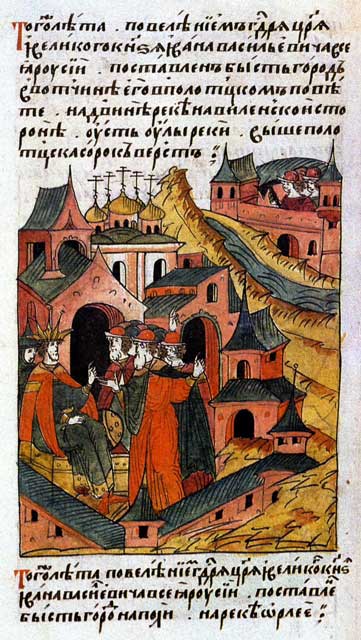
17th Century
Times of troubles.
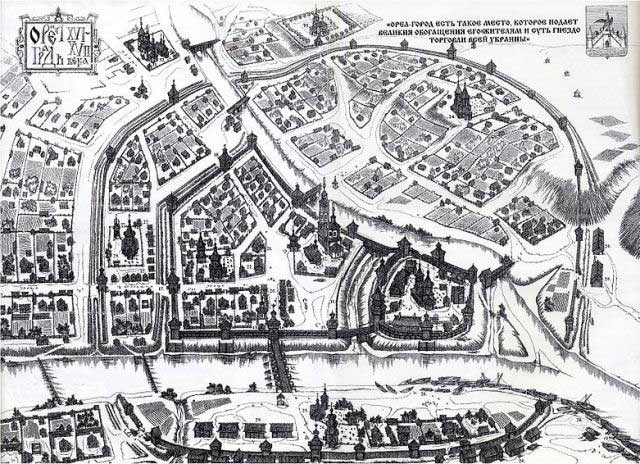
18th Century
Administrative reform.
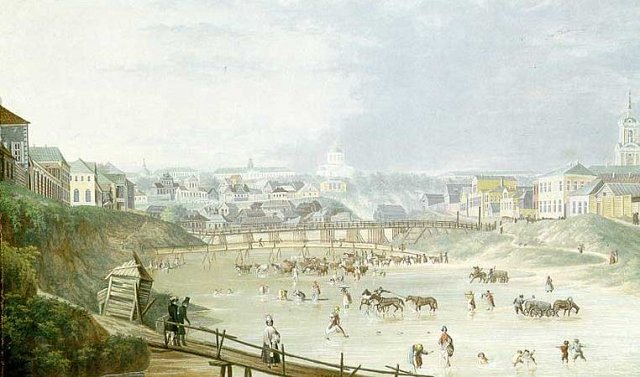
19th Century
Literary connections.
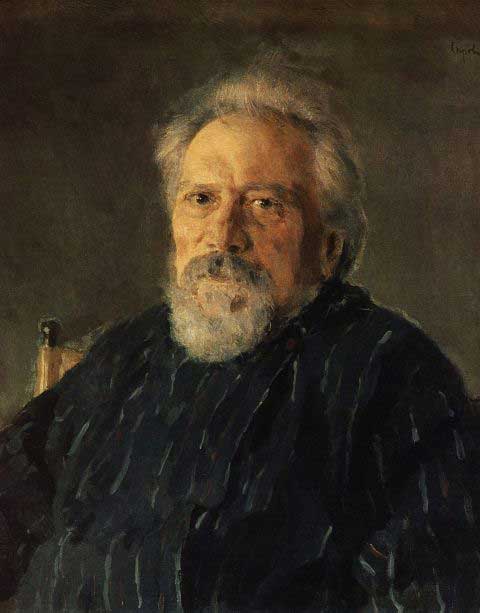
20th Century
Soviet power.
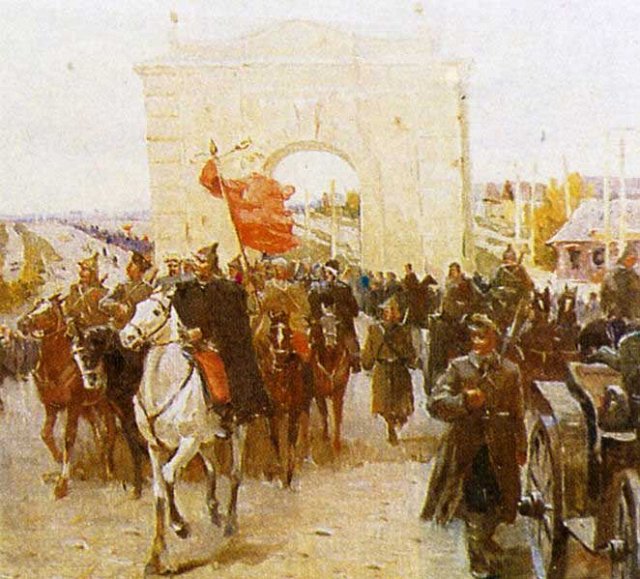
Second World War

Plan your next trip to Russia
Ready-to-book tours.
Your holiday in Russia starts here. Choose and book your tour to Russia.
REQUEST A CUSTOMISED TRIP
Looking for something unique? Create the trip of your dreams with the help of our experts.
- Rural Sociology
- Environmental Sociology
- Social Science
- Environmentalism
Monitoring the current state of rural territories ecology in the Oryol region and some areas of their environmental development
- December 2019
- Journal of Physics Conference Series 1399(5):055056
- 1399(5):055056
- This person is not on ResearchGate, or hasn't claimed this research yet.

IMAGES
COMMENTS
Although it has been claimed that discussing literary texts in the traditional way can help develop students' critical thinking skills, it is yet to be proved whether the use of a teaching aid can help the process. This study is, therefore, carried out to see if the use of computer software can help to develop such skills.
Developing critical thinking skills in computer-aided extended reading classes. This study looks at the potential of a literary text, Othello, and a concordancer in developing and enhancing critical thinking abilities of 40 English as a Second Language (ESL) students at the International Islamic University Malaysia.
Abstract. One of the skills that can be taught in an English proficiency class that adopts literary texts for teaching the language is critical thinking. The background, characters and their ...
DOI: 10.1111/j.0007-1013.2004.00405.x Corpus ID: 9854103; Developing critical thinking skills in computer-aided extended reading classes @article{Daud2004DevelopingCT, title={Developing critical thinking skills in computer-aided extended reading classes}, author={Nuraihan Mat Daud and Zamnah Husin}, journal={Br. J. Educ. Technol.}, year={2004}, volume={35}, pages={477-487}, url={https://api ...
One of the skills that can be taught in an English proficiency class that adopts literary texts for teaching the language is critical thinking. The background, characters and their motives are among those that invite critical inquiry and interpretation. Although it has been claimed that discussing literary texts in the traditional way can help develop students' critical thinking skills, it ...
Developing critical thinking skills in computer‐aided extended reading classes. Nuraihan Mat Daud ... literary texts in the traditional way can help develop students' critical thinking skills ...
Developing critical thinking skills in computer-aided extended reading classes . One of the skills that can be taught in an English proficiency class that adopts literary texts for teaching the language is critical thinking. The background, characters and their motives are among those that invite critical inquiry and interpretation.
A Critical Thinking Test was used to measure the critical thinking skills of the groups at the beginning and the end of the study. T-test and ANCOVA analyses were applied to the quantitative data ...
TL;DR: A Machine learning Framework (MLF) has been suggested to assess and monitor computer-aided reading classes for improving student critical thinking skills and shows that the suggested method enhances the student self-assessment, student monitoring and assessing progress, information processing score, reading comprehension score, and critical thinking level compared to other existing models.
Developing critical thinking skills in computer-aided extended reading classes. British Journal of Educational Technology, 35(4), 477-487. Article Google Scholar Durkin, K. (2008). The middle way: East Asian master's students' perceptions of critical argumentation in UK universities. Journal of Studies in ...
Daud, N. M., & Husin, Z. (2004). Developing critical thinking skills in computer-aided extended reading classes. British Journal of Educational Technology, 35(4), 477 ...
This research demonstrates that faculty focusing on enhancing critical thinking development in their courses can effectively improve students' critical thinking skills. This collaborative effort can synergize with other courses in which students are enrolled, collectively contributing to the necessary practice hours for developing critical ...
This article reports an action-based study on the implementation and assessment of a structured method to develop critical thinking skills and enabling student-teachers to use different methods when qualified, in the space of seven months. ... Developing critical thinking skills in computer-aided extended reading classes, British Journal of ...
Hence, in this paper, a Machine learning Framework (MLF) has been suggested to assess and monitor computer-aided reading classes for improving student critical thinking skills. To understand a text, the student needs to diagnose its words and access its meaning. Multi-task learning (MTL) has been used in the proposed model for topic tagging ...
A positive response to the CBLP is indicated, with students' independent exploration task contributing to improved critical reading and thinking skills, which highlights the effectiveness of the three-step CBLP scheme in developing cognitive skills and enhancing independent research. Abstract This study examines the development of students' cognitive skills through hands-on concordancing ...
Developing critical thinking skills in computer-aided extended reading classes. British Journal of Educational Technology, 35(4), 477-487. Davidson, B. W. (1998). Comments on Dwight Atkinson's "A Critical Approach to Critical Thinking in TESOL": A case for critical thinking in the English language classroom. TESOL Quarterly, 32(1), 119-123.
Find insights to improve teaching and learning across your campus. Delivered on Thursdays. To read this newsletter as soon as it sends, sign up to receive it in your email inbox.
One of the skills that can be taught in an English proficiency class that adopts literary texts for teaching the language is critical thinking. The background, characters and their motives are among those that invite critical inquiry and interpretation. Although it has been claimed that discussing literary texts in the traditional way can help develop students' critical thinking skills, it is ...
Oryol Oblast is a region in the Chernozemye region, bordering Kursk Oblast to the southwest, Bryansk Oblast to the northwest, Kaluga Oblast to the north, Tula Oblast to the east, and Lipetsk Oblast to the southeast.
Developing critical thin king skills in computer-aided extended reading classes. British Journal of Educational Technology, 35 (4), ... Developing critical thinking skills using the Science .
Find 1 memorial records at the Trinity Church cemetery in Oryol, Oryol Oblast. Add a memorial, flowers or photo.
(DOI: 10.1111/J.0007-1013.2004.00405.X) One of the skills that can be taught in an English proficiency class that adopts literary texts for teaching the language is critical thinking. The background, characters and their motives are among those that invite critical inquiry and interpretation. Although it has been claimed that discussing literary texts in the traditional way can help develop ...
19th Century Literary Connections. The 19th century saw Oryol becoming connected with several of Russia's greatest literary personalities. Ivan Turgenev, one of Russia's most famous writers, was born in Oryol in 1818 and had an estate in nearby Mtsensk.The author Nikolai Leskov was born in 1831 in the village of Gorokhovo in what was then the Oryol Governorate and spent his childhood in Oryol.
The current economic situation in rural territories is characterized by many challenges to their sustainable development. The level and quality of life in rural areas, underdevelopment of social ...